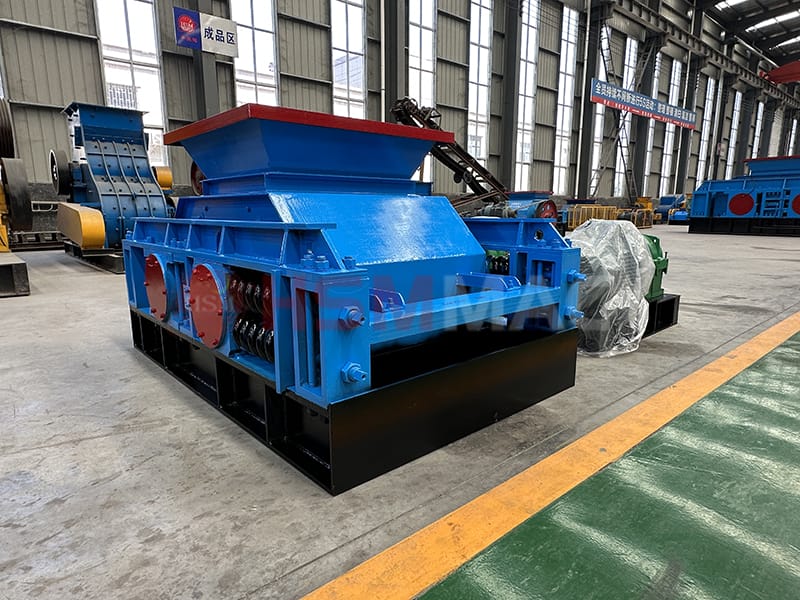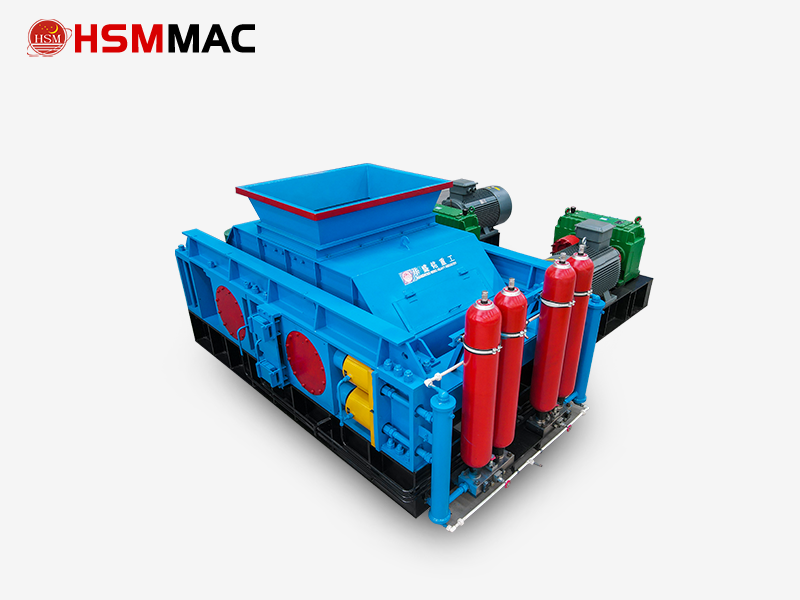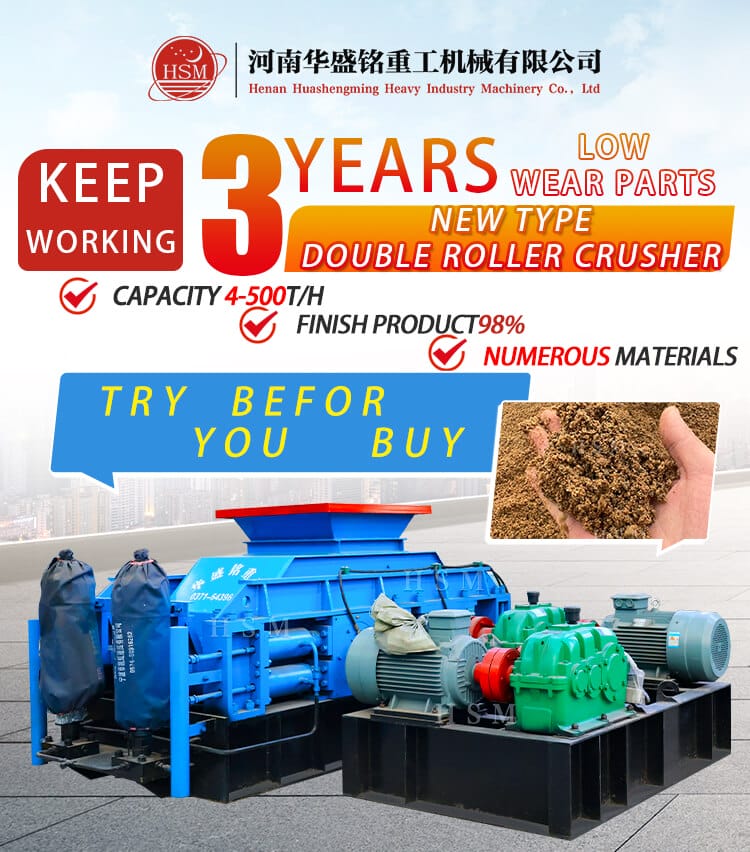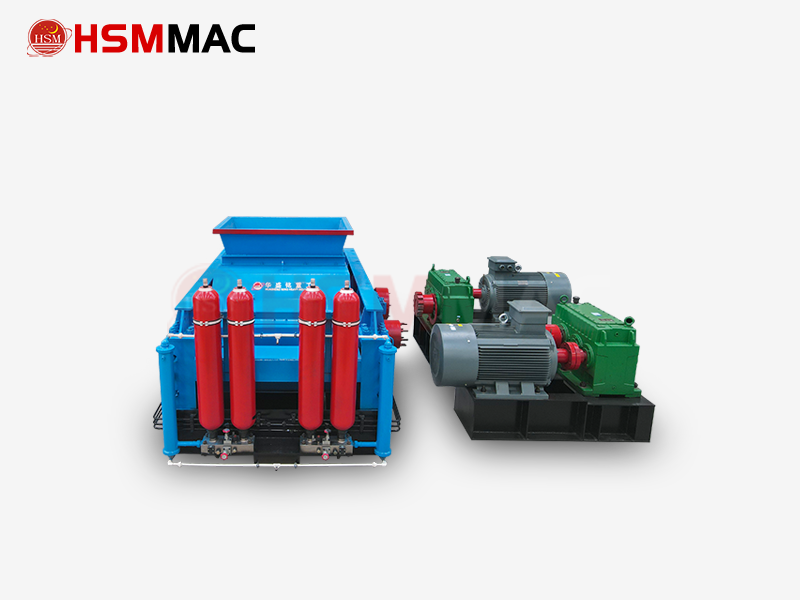In the field of rock crushing, the double-tooth roller crusher (counter-rotating roller crusher) offers significant advantages in specific applications due to its unique compression-shearing crushing mechanism and particle size control capabilities. However, its applicability must be evaluated comprehensively in conjunction with rock characteristics, crushing stages, and production capacity requirements. The following professional analysis is conducted from four dimensions: core advantages, applicability limitations, typical applications, and selection recommendations:
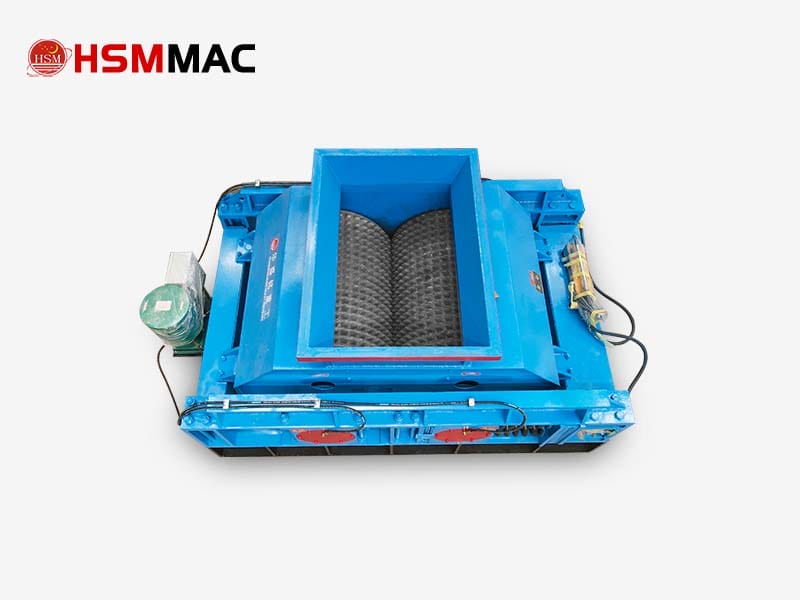
double-tooth roller crusher
1.Rock crusher Core Advantages: Uniform Particle Size and Low Energy Consumption
Flexible Crushing Process
The double-tooth roller crusher crushes materials through the squeezing and shearing forces generated by the counter-rotating rollers (non-impact type), effectively controlling over-crushing rates (reducing powder content by over 30%). It is particularly suitable for scenarios requiring high particle size uniformity (e.g., aggregate production).
Precise particle size adjustment: Roll spacing is hydraulically/mechanically adjustable (typically 30–200 mm), offering strong control over output particle size to meet various engineering gradation requirements.
Energy-saving and environmentally friendly characteristics
Low energy consumption: Low-speed, high-torque design with energy consumption of only 0.5–0.8 kWh/tonne, achieving 40% energy savings compared to impact crushers;
Environmentally friendly: Closed structure reduces dust emissions by 60%, noise levels below 85 dB, compliant with green production standards.
Simple structure and easy maintenance
Modular tooth roller design supports quick replacement (e.g., coarse/fine tooth type switching), wear-resistant alloy roller liners with a lifespan of over 8,000 hours, maintenance costs 30% lower than jaw crushers.
2. Rock crusher Application limitations: Hardness and rock type
Hardness adaptability limitations
The double-tooth roller crusher is only suitable for medium to low hardness rocks (compressive strength ≤ 70 MPa), such as coal, limestone, and shale. It is inefficient for high-hardness rocks (such as granite and basalt, with compressive strength > 150 MPa) and may cause equipment resonance damage.
Inapplicable scenarios comparison
| Rock type | Recommended crushers | Double-tooth roller applicability |
| High-hardness rock | Jaw crusher (coarse crushing) + cone crusher (fine crushing) | Not applicable |
| Medium-low hardness brittle rock | Impact crusher/hammer crusher | Partially applicable |
| Ductile rock (such as clay) | Double tooth roller crusher | Optimal choice |
Moisture Content Requirements
The moisture content of the material must be ≤15%; otherwise, it may adhere to the roller surface and cause blockages. Wet, sticky rocks must be pre-dried or processed using an impact crusher.
3. Rock crusher Typical Application Scenarios
Coal and Shale Crushing
High-efficiency uniform crushing: Models with a production capacity of 200 tonnes per hour (e.g., 2PGC1000×1200) can crush coal to 30–200 mm, with a powder rate <5%, directly usable as coking or power generation fuel.
Impurity Treatment: Rotating tooth rollers can separate lightweight impurities such as gangue and wood, improving raw material purity.
Medium to Low Hardness Aggregate Production
Limestone Sand Making: Output particle size ≤10 mm, cubic content >80%, meeting building material aggregate gradation requirements;
Construction Waste Recycling: Crushing concrete bricks and tiles to produce roadbed fill material, with a utilization rate ≥90%.
Special industrial raw material processing
Fine crushing of ceramic raw materials (feldspar, clay) to ≤5mm to avoid over-crushing that affects sintering performance
4.Rock crusher Model selection recommendations and parameter configuration
Key parameter matching
Production capacity requirements: For hourly output of 50-300 tonnes, select a fixed-type machine (e.g., 2PGC900×900); for hourly output >300 tonnes, a mobile unit is required
Particle size control: For coarse crushing, select wide-tooth rollers (output 50–200 mm); for fine crushing, select close-tooth rollers (output ≤10 mm).
Model recommendation table
| Model | Feed size (mm) | Discharge size (mm) | Capacity (t/h) | Suitable rock |
| 2PGC600×750 | 500-700 | 30-100 | 50-100 | Shale, coal gangue |
| 2PGC900×900 | 600-900 | 30-200 | 150-200 | Limestone, dolomite |
| 2PGC1200×1500 | 800-1050 | 30-200 | 200-300 | Construction waste, clay |
Optimisation of auxiliary equipment
Pre-screening system: Vibrating screens remove oversized material (>1050 mm), protecting the tooth rollers and improving efficiency.
Mobile integration: Track-mounted units (such as the HX mobile station) adapt to complex terrain in mining areas, with relocation time ≤2 hours.
Summary
The double-tooth roller crusher is a cost-effective choice for crushing medium to low hardness ductile rocks (compressive strength ≤70MPa), particularly in the coal, limestone, and construction waste recycling sectors.
However, it should be avoided for high-hardness rocks (granite, basalt, etc.), with the ‘jaw crusher + cone crusher’ combination being the preferred option. When selecting equipment, it is essential to strictly match the rock characteristics, production capacity, and particle size requirements, and to prioritise brands with wear-resistant roller lining technology (such as high-chromium alloy) and rapid response service capabilities.












